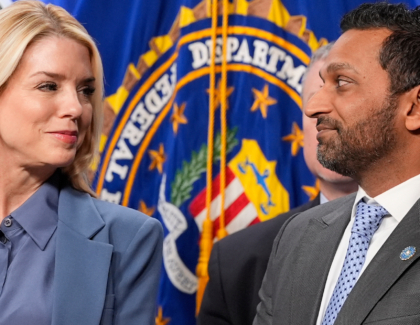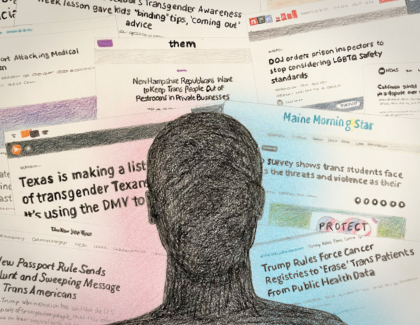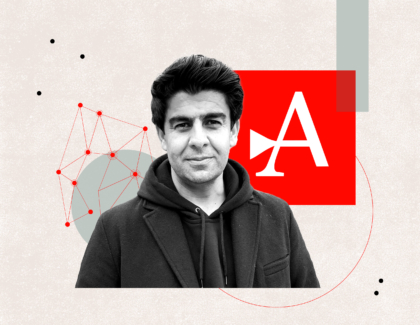Sign up for the daily CJR newsletter.
On Friday afternoon, a gunman opened fire at a municipal center in Virginia Beach. He killed 11 city employees and a contractor and critically wounded four other people. As news of the shooting—the deadliest in America in 2019—filtered through, cable news shows cut in with a sickeningly familiar breaking-news update. Not all of them stayed with the story, however. “What struck me, and worried me, was how this slaughter didn’t get more attention,” Brian Stelter, CNN’s media correspondent, noted late on Friday night. “I can remember a time, not too long ago, when a dozen dead citizens at a municipal building would be a bone-chilling, nonstop-coverage news story. It’s not, anymore, not to the same degree. And THAT is chilling.”
The Virginia Beach massacre did drive a news cycle through the weekend. Again, it was all far too familiar. We learned more about the shooter and the victims, and more about the act of carnage itself. Government officials were pressed on what they might actually do about gun violence, and punted. Yesterday, on Meet the Press, Mick Mulvaney, the White House chief of staff, told Chuck Todd that the shooting should not be politicized; when Todd countered that he was asking for policy, not politics, Mulvaney said, “We’re never going to protect everybody against everybody.” As of this morning, the story still sits prominently on the homepages of major news websites.
ICYMI: Who is Florida Man?
The problem, perhaps, isn’t a lack of coverage, but rather that so many of us have become desensitized to the horrific repetition. On Friday, Don Lemon hinted at that phenomenon on CNN. “This may be what’s often referred to as ‘the new normal.’ But we cannot accept that. We cannot allow this to be acceptable,” he said. “Only a few weeks ago, we reported on a shooting at a synagogue in California. After that, a shooting at a school in Colorado. Tonight, Virginia Beach. This happens all around our country, all the time.”
In the 24 hours after the shooting, it at least felt like its victims were being prioritized. This was due, in no small part, to the actions of Virginia Beach city officials, who began a news conference on Saturday by naming the dead and highlighting their service to the municipality while their photos were projected onto a screen. “We want you to know who they were, so in the days and weeks to come, you will learn what they meant to all of us,” David Hansen, the city manager, said. Later, James Cervera, the police chief, named the shooter for the first and—he pledged—only time. Officials’ decision not to repeat the identity of the suspect isn’t novel: it echoes moves by figures in the media (e.g. Anderson Cooper) and politics (e.g. Jacinda Ardern, the prime minister of New Zealand) to starve shooters of notoriety, which some researchers believe can inspire copycats. “We wanted to control that narrative,” Steve Cover, another Virginia Beach official, confirmed to the Associated Press.
The Saturday press conference, with its lead focus on the victims, fed into media coverage, complementing—and signal-boosting—the victim-centered pieces that major outlets commonly compile in the wake of mass tragedy. On Saturday, it framed a prominent New York Times story on the massacre; yesterday, ABC’s George Stephanopoulos named all the victims, and showed their photos, prior to an interview with Cervera, who reiterated that he would not be naming the suspect again. By the end of yesterday, however, the bulk of the focus was back on the gunman after officials revealed that he had resigned as a municipal employee shortly before committing mass murder. That angle still tops much Virginia Beach coverage this morning, including on the homepages of the Times, The Washington Post, and The Wall Street Journal.
Other third-day coverage felt familiar, too. A mass shooting couldn’t happen in Virginia Beach, The Guardian told us, but then it did. Virginia Beach residents don’t want their city to become synonymous with horror, the Post reports, and yet sadly it probably will. This news cycle contained flickers of something different, but sometimes, repetition in coverage is simply unavoidable. Where it is necessary, we should make it a virtue. We should repeat that this is not normal, that policy-makers can take steps to stop atrocities like this one. Saying so has, itself, become a cliché. But the alternative is silent resignation—and as Stelter and Lemon pointed out, that’s no choice at all.
Below, more on Virginia Beach and mass shootings coverage:
- An impactful image: On Saturday, the local Virginian-Pilot newspaper ran a front-page photo of a survivor wearing a green shirt spattered with blood. The New Yorker’s Michael Luo assessed the powerful impact of the image. “There is a case to be made that the country needs to be exposed to these kinds of images, if we have any hope of being jolted from our collective inurement to the ravages of gun violence,” Luo writes. “I am guessing the details of Virginia Beach will soon blur in my memory, alongside the litany of other mass shootings that have dominated cable news and quickly receded. But my memory of the man in the green shirt will endure.”
- Desensitization: Following last year’s mass shooting at Marjory Stoneman Douglas High School in Parkland, Florida, Kate Morgan asked, for New York’s The Cut, how the public can become desensitized to horrific events. “Growing accustomed to repeated violent acts is a form of adaptation, and most people do it without even realizing it,” experts told Morgan. “And the worse things get, the quicker we tend to grow numb.”
- Reframing the debate: On Saturday, Elizabeth Warren, the Massachusetts senator who is running for the Democratic presidential nomination, was asked what she would do to combat mass shootings. She replied that we need, first and foremost, to reframe the conversation. “It’s not just mass shootings,” Warren said. Every day, gun violence happens “on sidewalks and playgrounds and people’s backyards. It’s happening family by family across the country. And it doesn’t get the same headlines. And that is wrong.” The Guardian’s Lois Beckett has more.
Other notable stories:
- Trump’s state visit to Britain kicks off today. The president already made waves in interviews with The Sun and The Sunday Times, two British papers owned by Rupert Murdoch: Trump breached diplomatic protocol by effectively backing Boris Johnson to become prime minister, encouraged the UK to sue the European Union over Brexit, and said he didn’t know that Meghan Markle—who previously called Trump “misogynistic” and “divisive”—was “nasty.” On Saturday, a Twitter account linked to Trump’s reelection campaign claimed Trump never called Markle “nasty”; as proof, it shared audio… of Trump calling Markle “nasty.” On Twitter, some observers pointed out that Trump may have meant that Markle was nasty about him, rather than calling her a nasty person. Either way, Trump, who certainly said the word, doubled down on his denial yesterday.
- Yesterday, the Times stepped into TV with the debut of The Weekly, a new show on FX (also available to stream on Hulu) showcasing the paper’s reporting in a newsmagazine-type format. The arrival of The Weekly is a further expansion for the Times and follows the huge success of The Daily, the paper’s daily-news podcast. Also yesterday, Axios returned with season 2 of its HBO show. Reporter Jonathan Swan held Jared Kushner’s feet to the fire over whether Trump’s “birther” lie was racist.
- The Daily Beast’s Kevin Poulsen tracked down Shawn Brooks, a day laborer and sports blogger from the Bronx who, according to a Facebook official, was behind the recent viral video that slowed House Speaker Nancy Pelosi’s speech to make her sound drunk. (Brooks denies he uploaded it.) Over the weekend, several journalists criticized the Beast for outing a “private citizen”. On CNN’s Reliable Sources, Noah Shachtman, the site’s editor, hit back—the story is important because it proves that “you don’t need some sophisticated operation in order to publish fake news,” he said.
- Yesterday, Univision finally aired Jorge Ramos’s February sit-down with Nicolás Maduro, the president of Venezuela—the network was able to recover the tape, which had been seized after Maduro took exception to Ramos’s questions and terminated the interview. At the time, Venezuelan officials briefly detained Ramos, then expelled him from the country. In the aftermath of the episode, Isaac Lee, a former Univision executive, tracked Venezuela’s dire press-freedom climate in a piece for CJR.
- Last night, Kirsten Gillibrand, senator for New York, became the latest Democratic presidential candidate to do a town hall on Fox News. Asked about abortion, Gillibrand accused Fox of spreading a “false choice and a false narrative” by helping popularize the term “infanticide.” Chris Wallace, who was moderating, cut Gillibrand off. “I understand that maybe to make your credentials with the Democrats who are not appearing on Fox News you want to attack us,” he said. “I’m not sure it’s frankly very polite when we’ve invited you to be here.”
- On Friday, the Journal’s Brent Kendall and John D. McKinnon reported that the Justice Department is preparing to launch an antitrust investigation of Google. On Saturday, the Post’s Tony Romm added that the move would seem to be the result of a regulatory carve-up that will see the Federal Trade Commission assume greater oversight of Amazon.
- As of Friday, almost all applicants for US visas are required to submit five years’ worth of social media account details, email addresses, and phone numbers. Immigration officials say access to the data will improve their screening procedures. The American Civil Liberties Union disputes that claim; the new policy, it says, raises substantial First Amendment and privacy concerns, and could lead to self-censorship.
- And for CJR, Rachel Cohen profiles Credder, a startup that invites readers to rate news articles based on trust. The service bears similarities to Rotten Tomatoes, the film- and TV-review site, except “instead of a tomato icon, Credder uses a picture of cheddar cheese. (Golden cheese for most trustworthy, moldy cheese for least.)”
ICYMI: Where do LA Times staffers go after they leave the paper? We found out
Has America ever needed a media defender more than now? Help us by joining CJR today.







